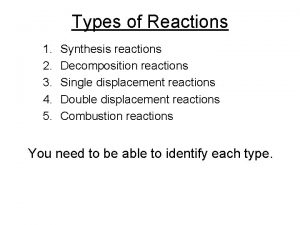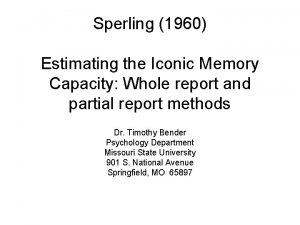Partial Replacement of Cement Using Pulverized Nova Scotian

- Slides: 1

Partial Replacement of Cement Using Pulverized Nova Scotian Lobster Shell and Fly Ash Design Process & Material Selection Test Results Mix Design Alternative Case Scenario Mix Base Case Mix Versus Alternative Case Mix Task Identification & Brain Storming The team reviewed competition creative constraints and researched competition testing criterion to establish our concrete's desirable properties. Following this we considered primary provincial industries & major sources of waste. Our team choose to utilize waste from the lobster industry and coal-based energy generation sector. Material Selection & Literature Review Course Aggregate - Non-reactive (19 mm nominal size) crushed stone sourced from Dartmouth, NS; selected to reduce conductance/ corrosion; critical for resistivity testing Fine Aggregate - Non-reactive sand (Fineness modulus of 2. 59, primary particle size retention from 0. 3 mm to 0. 6 mm sieves) sourced from Dartmouth, NS; selected to reduce conductance/ corrosion; critical for resistivity testing Figure 9 : Base & Alternative Strength Comparison Figure 10 : Alternative Mixes Comparison Markers Figure 11 : Density of Concrete Mixes Figure 12 : Base & Alternative Batched Slump Figure 5 : ACS Aggregate Material Proportions Figure 3 : ACS Binder Material Proportions Figure 7 : Alternative Case Scenario Design Water - Standard tap water used to provide water-to-binder ratio of 0. 43 Base Case Scenario Mix Portland Cement - GU Type I, sourced from La. Farge Cement Plant (Brookfield NS) Pulverized Lobster Shell - Cooked lobster shells destined for disposal were collected, cleaned and dried for 4 hours at 80°C. The initial cooking process subjected the shells to 100°C and caused the partial conversion of Ca. CO 3 to Ca. O (the primary chemical in Portland Cement) and CO 2. Our drying process did not cause any additional chemical changes as temperature did not exceed 100°C. Pulverization of the dried shell created a powder of similar gradation to cement (see Figure 1); fineness modulus of 3. 5, primary particle size retention from 0. 3 mm to 0. 6 mm sieves. Literature suggested a 4% substitution of cement with shell, however this percentage was based on a shell with higher concentrations of Ca. O, thus our team created 3 ACS mixes with varying percentages (2%, 5% and 8%) of pulverized lobster shell (see Figure 2). Fly Ash - Class F fly-ash is produced locally in mass amounts as a by-product of Nova Scotia's coal-powered energy sector; sourced from Tuff's Cove generating station, Dartmouth NS; low transportation cost and a reduction of cement required in ACS (therefore less CO 2 emissions) Recommendations Figure 6 : BCS Aggregate Material Proportions Figure 4 : BCS Binder Material Proportions Figure 8 : Base Case Scenario Design Life Cycle Analysis Figure 1 : Gradation of lobster shell vs Portland Cement Mix Design Calculations & Batching 5 Mixes were batched to determine optimum material proportions (see Figure 1); 1) BCS- mixed as outlined in competition rules (see Figure 7 for proportions) 2) Control ACS- mixed with 25% substitution of Portland cement, provided a comparison for ACS with lobster 3) ACS (2% lobster) - 2% of lobster and 20% of fly ash replaced 22% of cement 4) ACS (5% lobster) - 5% of lobster and 20% of fly ash replaced 25% of cement 5) ACS (8% lobster) - 8% of lobster and 20% of fly ash replaced 28% of cement Mechanical Testing & ACS Selection Compressive testing was conducted at 7, 19 and 34 days (see Figure 9, 10 respectively). This allowed the team to monitor the mechanical properties of multiple ACS mixes with various proportions, and select the ACS with the most desired properties as cure time progressed Figure 2 : Photo of all 5 mixes created, seen here at a cure time of 7 days; 1 BCS, 1 Control ACS & 3 ACS (each with varying percentages of lobster shell) Major Factors in LCA • Energy Generation • Pulverizing vs. Burning + Pulverizing (2 nd case) • Transportation Distance • Shorter Transportation (local material), Less Pollution • Replaced Cement Material • 10% vs. 20%, 30%: Fly ash replacement • Material category: Fly ash vs. Slag, Silica fume 1. Increase sample testing size to 3 cylinders per break date to construct confidence intervals on sample data to yield sensible results. 3. Increase the percentage of lobster shell substitution as cement replacement. 4. Experiment lobster shell substitution for sand replacement. 2. Experiment with various energy inputs on the 5. Perform compressive strength tests on lobster shells to increase cementitious longer cured concrete specimen. properties. References Olivia, M. , et al. “Properties of Concrete Containing Ground Waste Cockle and Clam Seashells. ” Procedia Engineering vol. 171, Feb 2017, pp. 658 -663. Science Direct, https: //doi. org/10. 1016/j. proeng. 2017. 01. 404 Saunders, A. “Coal for Cement: Present and Future Trends. ” Global Cement, Mar 2016. www. globalcement. com/magazine/articles/974 -coal-for-cement-present-and-future-trends Smailyte, G. , et al. “Mortality and Cancer Incidence among Lithuanian Cement Producing Workers. ” Occupational and Environmental Medicine, vol. 61, no. 6, Jun 2004, pp. 529– 534. Research. Gate. https: //doi. org/10. 1136/oem. 2003. 009936 Stafford, N. F. , et al. “Life Cycle Assessment of the production of cement: A Brazilian Case Study. ” Journal of cleaner Production vol. 137, Nov 2016, pp. 1293 -1299. Science Direct. https: //doi. org/10. 1016/j. jclepro. 2016. 07. 050 Tafheem, Z, et al. “Environmental Impact of Green Concrete in Practice. ” 1 st International Conference on Mechanical Engineering and Renewable Energy (ICMERE) Dec 2011, Chittagon, University of Science and Technology. Tsiridis, V. , et al. “Environmental Hazard Assessment of Coal Fly Ashes Using Leaching and Ecotoxicity Tests. ” Ecotoxicology and Environmental Safety, Oct 2012, pp. 212 -220. Science Direct. https: //doi. org/10. 1016/j. ecoenv. 2012. 07. 011 Wan Mohammad, A. S. B. , et al. “A Review on Seashell Ash as Partial Cement Replacement. ” IOP Conference Series: Materials Science and Engineering Aug 2017, Johor Bahru, University Tun Hussein Onn Malaysia. Winder, C. , and Carmody, M. “The Dermal Toxicity of Cement. ” Toxicology and Industrial Health vol. 18, no. 7, Aug 2002, pp. 23123. Research. Gate. https: //doi. org/10. 1191/0748233702 th 159 oa Figure 13 : Transportation Map Presented to: ACI Nordique - The Concrete Convention and Exposition Presented by: Dalhousie University ACI Student Chapter Team ID: DAL 18 Advisor: Dr. Pedram Sadeghian Contact Email: Pedram. Sadeghian@dal. ca Members: Faraj Shahrstan, Lee-Ann Nguyen, Xiangxu Xu, Sara Evely, Shuyi Yang

